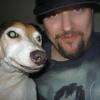

| Visitors Now: | |
| Total Visits: | |
| Total Stories: |

| Story Views | |
| Now: | |
| Last Hour: | |
| Last 24 Hours: | |
| Total: | |
Native Practices For Tracking
Tamarack Song on Native practices for ‘Entering the Mind of the Tracker’
Could you go into your background and origins of studying with the Aboriginal people?
My mother and grandmother placed my feet on this trail—my first memories are of them gathering wild foods and making Willow flutes. When I was seven or eight years old, a Menominee tribal elder visited my family, and he showed me how to communicate in the language beyond words—the way the animals talk to each other. In my early 20s I hitchhiked around the country to find Indians who still practiced their traditional ways. They told me stories and showed me skills that I couldn’t have learned anywhere else.
Perhaps their greatest gift was their encouraging me to go and learn from the animals. So for several years in my mid-20s I went to live with a pack of semi-domestic Wolves. To this day I dream of the life we had: playing games to train for the hunt and living in a trusting family group that held each other in mutual regard.
At around that time, I met Hopi elder and Wolf clan member Thomas Banyacya, along with Australian Aboriginal elder Faye Moseley. They gave me guidance, and above all they encouraged me to continue my work in bringing the wisdoms of the Old Way to our troubled times. To this day, I continue with my 40-year academic study of the world’s indigenous cultures, and I keep learning from the elders, who are periodic houseguests.
What is the main purpose of tracking from your perspective, and could you explain to us why you think it is an ability everyone has built in?
The main role of tracking is to help us get through the day. I may make my living by tracking, but that’s nothing special, because so do you. And even though I might track anything from Wolf packs to lost people, you are just as much a tracker is I am. We tend to think of tracking as a hunting skill or a way to find people lost in the wilderness, but imagine what our lives would be like if we didn’t keep track of things or track things down, or if we kept getting lost because we couldn’t backtrack ourselves.
Tracking is an instinctive skill, imprinted in our DNA. For hundreds of thousands of years, our hunter-gatherer ancestors made their livings by tracking animals. The only animals most of us track down these days are our kids, yet we use our intrinsic tracking ability throughout the day. Internet research is tracking, shopping for clothing and groceries is tracking, finding that new restaurant is tracking. Right from the first days of our life we are honing our tracking ability, by finding our way to our mother’s breast, and then by finding our way around the house.
Why did you choose to live with a family of wolves in the wild, and what did you learn from them?
In my early 20s I grew frustrated with life: my marriage fell apart, I had trouble focusing in school, and friends didn’t seem to understand my passion for all things wild and natural. And then, seemingly out of nowhere, four Wolf pups appeared in my lap. In many ways, we grew up together—from them I learned how to be in the moment and speak the truth of my heart. They would simply not accept me if I repressed my feelings and put on a false face. There was no judgment and no expectation other than to be who I was.
Those Wolves became my family—literally. I was a part of their pack, and I felt closer to them than to any human. They were always ready to run with the wind, always ready for the game of the hunt. Along with them, I grew in physical strength and sensory intelligence. I learned how to move like a shadow and stalk silently. I learned the importance of putting the pack before the individual, and how the pack speaks with one voice and moves like one animal. I learned how to kill when I needed to, and how to keep from being killed. They were the quintessential ninja masters, and I was their eager apprentice.
For the rest of this interview to learn about the art of tracking from the Native perspective please visit the following link



